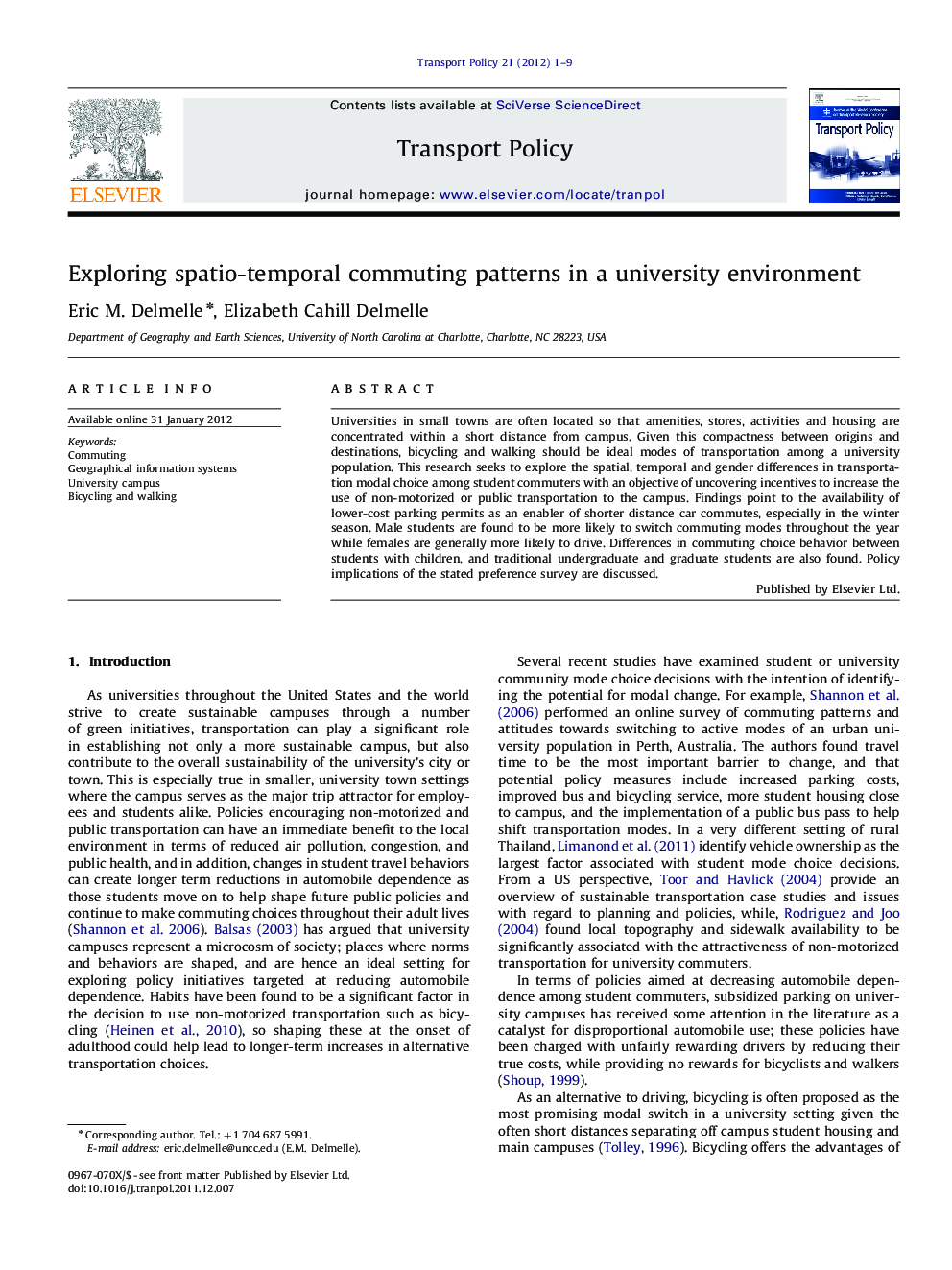| Article ID | Journal | Published Year | Pages | File Type |
|---|---|---|---|---|
| 1065178 | Transport Policy | 2012 | 9 Pages |
Universities in small towns are often located so that amenities, stores, activities and housing are concentrated within a short distance from campus. Given this compactness between origins and destinations, bicycling and walking should be ideal modes of transportation among a university population. This research seeks to explore the spatial, temporal and gender differences in transportation modal choice among student commuters with an objective of uncovering incentives to increase the use of non-motorized or public transportation to the campus. Findings point to the availability of lower-cost parking permits as an enabler of shorter distance car commutes, especially in the winter season. Male students are found to be more likely to switch commuting modes throughout the year while females are generally more likely to drive. Differences in commuting choice behavior between students with children, and traditional undergraduate and graduate students are also found. Policy implications of the stated preference survey are discussed.
► Survey on university student stated mode choices and incentives to change. ► Favorable weather conditions increase likelihood of using non-motorized modes. ► Low-cost parking fees identified as one policy measure that enable seasonal changes. ► Male students stated willingness to change modes with rising parking prices. ► Students with children and females much less likely to bike to campus.
